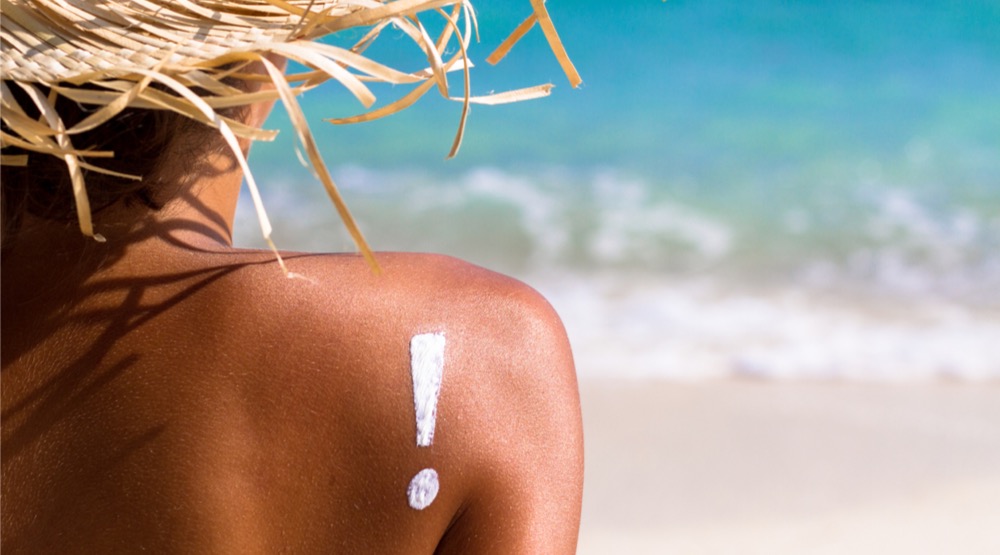When it comes to premature ageing and our harsh Aussie climate, it’s a safe bet that every skincare professional will tout the benefits of a high-quality sunscreen.
However, scientific debate has emerged around nanotechnology in sunscreens and the potential for particles to escape into the blood stream. A recent study conducted in November 2019 by the Food and Drug Administration (U.S) on potentially harmful ingredients in sunscreens, reportedly found high levels of toxic compounds in the subjects’ blood stream.
While chemicals found at elevated levels in the bloodstream would certainly be cause for concern, the FDA study, which was based on just 48 people, has received harsh criticism from the Cosmetic Physicians College of Australasia (CPCA).
“The fact is, the human trial by the FDA was conducted under extreme laboratory conditions, with subjects applying sunscreen every two hours to 75 per cent of the body for three days and not in the real ‘beach’ environment,” says Dr Michael Molton, President of the CPCA.
By contrast, the Therapeutic Goods Administration (TGA) quotes European studies that have been performed in more ‘realistic’ circumstances and which have failed to support the FDA claims.
The TGA constantly monitors emerging scientific literature to ensure appropriate action is taken should any tangible safety concerns be identified. In Australia, all active ingredients, such as zinc oxide and titanium dioxide, must be declared on sunscreen labels, to help consumers make informed choices. However, it is not a requirement for sunscreen labels to declare the particle size of the active ingredients.
“Given that we have one of the highest incidence of skin cancer in the world, Australians should not suddenly stop using sunscreen based on this study,” continued Dr Molton, “But there may well be a need for more research regarding the recommended application of sunscreen every two hours, as advised by the Cancer Council. The Cancer Council also advises that sunscreen should be applied under makeup that already contains sunscreen and reapplied every two hours during longer periods of sun exposure”.
Doctor Molton went on to suggest that Aussies need to be more aware of when their skin is at most risk of sun damage. “Almost every day I have patients ask me ‘why is my right eye-brow lower than my left’, or ‘why do I have more wrinkles and sun blemishes on the right side of my face?’. The answer of course is that a lot of sun damage occurs when driving, especially when the sun is lower in the sky. The impact is also prevalent in autumn, winter and spring, when we tend not to think of sun protection.”
Are all sunscreens created equal?
In a word, no. As therapists, it’s important to know the properties of each, and which is suitable to a client’s lifestyle.
SPF vs broad spectrum
Sun Protection Factor (SPF) measures protection against burning UVB rays but not UVA rays. Although UVB radiation is the primary cause of sunburn and skin cancer, UVA radiation is what causes long-term damage like photoageing that
can result in wrinkles, sun spots and uneven pigmentation. In high doses UVA radiation can also contribute to skin cancer. A broad spectrum sunscreen is recommended as it will protect against both UVB and UVA rays.
The SPF rating, in simple terms, is a measure of the length of time it will take for the skin to burn with the sunscreen versus the same skin without any protection ie with SPF 30 it would take someone 30 times longer to burn than if they weren’t wearing sunscreen. The recommendation: apply a sunscreen with broad spectrum protection and a high SPF (preferably water resistant) and apply it liberally to all sun-exposed areas.
Chemical vs physical sunscreen
Both chemical (organic) and physical (inorganic) sunscreens shield skin from the sun, however they work differently to achieve this – one contains active ingredients that absorb UV radiation and the other reflects it.
Chemical sunscreens are also known as ‘organic’ sunscreens due to the presence of carbon atoms that act by absorbing UV light within the skin. While they are the more common type of sunscreen, the active ingredients in chemical sunscreens may cause irritation, allergy or sensitivity compared with natural zinc oxide. Concerns have also been raised about certain chemicals in these sunscreens, especially oxybenzone and octinoxate.
Additionally, chemical sunscreen users also often don’t realise their chemical SPF30 moisturiser applied first thing in the morning has been broken down by their body and is totally ineffective by lunchtime.
Physical sunscreens
Many Australian skin professionals recommend physical sunscreens (also referred to as ‘inorganic’ sunscreens) over chemical sunscreens. They contain a natural mineral that sits on the skin’s surface, physically blocking the penetration of both UVA and UVB rays by UV absorption and reflection.
Zinc oxide sunscreen is now micronised so it is virtually invisible on the skin. It also provides anti-inflammatory and non-allergenic benefits – so it is ideal for blemish- prone, irritated or sensitive skin.
Zinc oxide adheres gently to the skin’s surface and is considered highly water resistant. For adequate sun protection at least 18 percent zinc oxide is recommended in cream or lotion formulations.
In addition to moisturisers and body sunscreens, zinc oxide and titanium dioxide have also been introduced to mineral makeup formulations. Some high quality loose mineral formulations contain around 50 percent zinc oxide and titanium dioxide, offering wearers extremely high UVA/B protection.
“However balance is key – just 10 minutes of early morning sunlight is a sensible amount of sun exposure to avoid Vitamin D deficiency,” recommends Dr Molton.
For more news and updates, subscribe to our weekly newsletter.

